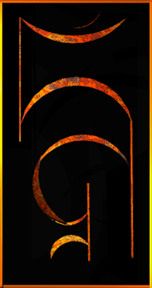About The Golden Bird Foundation
The Golden Bird Foundation was founded in 2000 and run by a group of professionals whose goal was to uphold conservation and the saving of endangered species through promotion of sound animal welfare in captive animals in China, Brazil and Asia. We aim to support ex-situ and in-situ conservation programmes through design, education and research
Our Mission
The Golden Bird Foundation's mission was to advise and promote animal conservation and animal welfare with a focus on improving and replenishing zoo enclosures through consultation and design guidance and support of rebuilding naturalized exhibits. We upheld sound zoo-keeping practices through teaching enrichment (behavioural, environmental and social) and creating practical solutions through volunteer work, research and education on this subject throughout China and Hong Kong S.A.R.
Our Objectives
- Enable animals in captivity to express their natural behaviours in naturalized exhibits through professional, modern exhibit design.
- Promote conservation through education of animal custodians and through graphically designed information centres related to the exhibits.
- Financially support the design costs for the International team and help raise funds for material costs of exhibits.
- Fund training for animal custodians in behavioural and environmental enrichment.
- To commit to conservation projects supporting ex-situ and in-situ initiatives, with research and then building in-situ conservation centres and field stations.
- Fund activities, equipment and material costs for volunteer organizations BITE and NITE. Named in 2000 by Helena of Swedish Embassy, Beijing International Team of Enrichment, National and International Team of Enrichment.
- Build workshop buildings, small fully equipped classrooms, in regional zoos in which to focus the enrichment work.
- Organize conferences which promote optimal enrichment, design and animal training.
Why the GBF?
Captive areas in zoos, entertainment centres and safari type zoos hold many types of animals and often endangered species. This may be the only place that the general public can view animals and they need to be seen in natural exhibits and expressing natural behaviours. If the space is barren the space inadequate and socially inappropriate this predisposes to poor animal welfare and expression of sub-standard behaviours.
History and background
The Golden Bird Foundation, a charity organization and was formerly founded and registered in Hong Kong in 2005. The founders were Dr. Carin Harrington (Chinese name, Jin Long, Gold Dragon), John O’loghlen, New Zealand and USA architect/urban designer Nick Chapin. The successful work of the group in zoo enrichment, exhibit design and environmental education in China dates back to the year 2000. The GBF is supported by great friends International and National, with fantastic input into all their initiatives.
Historically, we have worked closely with the Australian Embassy and the Australian Chamber of Commerce and also the British, Swedish and Canadian Embassies in Beijing who assist us with funding and administration.
Much support came also from groups within Beijing’s Chinese and expatriate communities notably the British Ladies club, ANZA and the business community, multinational corporations and the diplomatic corps (many of these groups remain close to the GBF today).
As the scope of GBF’s work expanded, and with consultation from Auslan Ishmael of Australian Chamber of commerce and John O’Loghlen Businessman, Gung Ho enterprises and now Alibaba executive, we formally institutionalized the Foundation’s structure to create the appropriate vehicle to allow for greater fundraising on the mainland and outside the PRC. In May 2008, with professional pro bono assistance from Haldanes, Hong Kong solicitors and notaries, the Golden Bird Foundation Limited was authorized to operate as a charitable foundation in HK and Greater China.
The Foundation worked China wide with detailed projects in Beijing and Nanjing zoos primarily in exhibit design and construction but also setting up the enrichment programmes and creating designated and fully equiped workshop areas for the work.
We have been given space for enrichment rooms in Beijing and Nanjing. We donated furniture, tools and equipment for the workshops as well as providing environmental design plans and funding the materials for the projects.
We give guidance and lectures on refurbishing exhibits small and large and add the behavioural enrichment programmes.
Our architect and design team create blue-prints and exhibit plans to allow zoos to change the exhibits into naturalistic and exciting areas.
Our current project as we move forwards looks towards helping elephants in Botswana. After the covid 19 crisis is over we hope to reconnect with all our contacts to find sound solutions for saving the elephant using China and Brazilian zoos and designed habitat zones.
We were involved in projects of inner and outer holding zones in Ape houses, Primate areas, mongoose zones and one of our most successful projects was the Otter exhibit in Beijing Zoo.
We have also master planned zonal exhibits i.e. the Canadian wolf exhibit and the Australian Zone in Beijing and Nanjing Zoos. We have also been principal designers with Tsinghua University for the Conservation Park for Beijing Olympic Forest Park, the White Headed langur tourism park proposal for Fushui, and have advised in Xian on their conservation zone. Other projects have been proposed in Hangzhou Nanmu forest for a museum and endangered species areas. We have consulted and submitted a detailed design on Fuzhou conservation centre and a biodiversity centre in Duyjianyuan.
We held weekly teaching in the zoos and Universities in China and now Dr Harrington lectures in Manchester Salford, Poland, Brazil and South Africa.
We are supported by Chester Zoo, Dublin Zoo and London Zoo in the UK - where we have funded training exchanges for staff from Beijing Zoo.
We also have worked with zoos in Australia, Sweden and zoos in the USA. More recently we are also working with zoos in Brazil.
Our research in zoos has been based at the Chinese Academy of Science headed by Professor Jiang Zhigang and also in Beijing and Nanjing Normal Universities.
The GBF is registered in IUCN with certification presented by Chairman of IUCN Professor McNeely in 2007. We are also registered at Chinese Academy of Sciences, Beijing.
Much of our volunteer work has been carried out using Embassy Volunteers, Universities and International school groups, supported by our volunteer groups BITE Beijing International Team of Enrichment) and NITE Nanjing and National Team of Enrichment).
Looking forward the Foundation seeks in increase the number of educational exchanges it supports as well as we continue to drive zoo behavioural and environmental enrichment through exhibit rebuilding and at all levels working with Chinese zoos, Government, Universities and Schools.
We thank you for visiting our site and hope you find these pages informative.
About The Golden Bird Foundation

Design Elephant

Elephant area for improvement. Added into area, sand, water pools feeding poles and shade systems. Funded by Nanjing Zoo and Bosch Siemens.
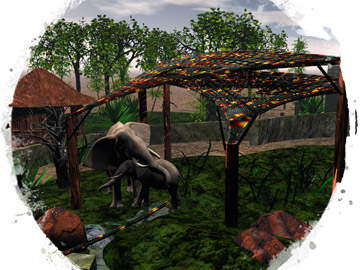
Master Plan for Elephants, Beijing Zoo.

Master Plan for Nanjing Elephants
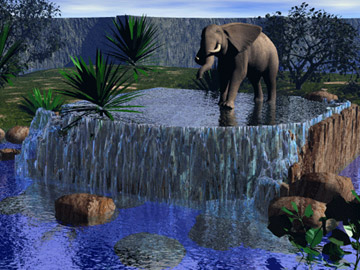
Water for Elephants

Elephant enrichment. Plan mirror recognition design.
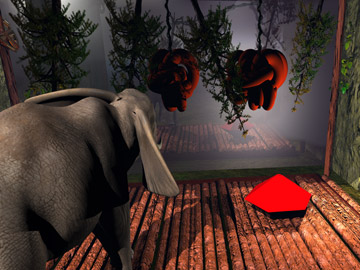
Ground Substrate – Soft – Inner Enrichment on Frame
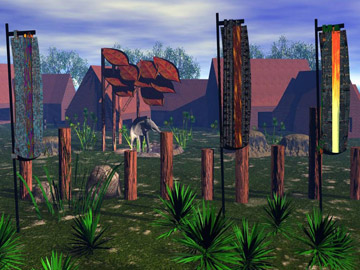
Shade and Shower
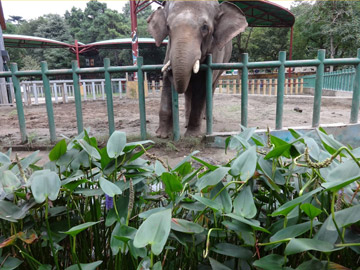
Education Zone and Disguise Barrier with Vegetation
